
- Home
- India
- World
- Premium
- THE FEDERAL SPECIAL
- Analysis
- States
- Perspective
- Videos
- Sports
- Education
- Entertainment
- Elections
- Features
- Health
- Business
- Series
- In memoriam: Sheikh Mujibur Rahman
- Bishnoi's Men
- NEET TANGLE
- Economy Series
- Earth Day
- Kashmir’s Frozen Turbulence
- India@75
- The legend of Ramjanmabhoomi
- Liberalisation@30
- How to tame a dragon
- Celebrating biodiversity
- Farm Matters
- 50 days of solitude
- Bringing Migrants Home
- Budget 2020
- Jharkhand Votes
- The Federal Investigates
- The Federal Impact
- Vanishing Sand
- Gandhi @ 150
- Andhra Today
- Field report
- Operation Gulmarg
- Pandemic @1 Mn in India
- The Federal Year-End
- The Zero Year
- Science
- Brand studio
- Newsletter
- Elections 2024
- Events
How Gond, Patachitra painters are bringing tribal, folk art to urban spaces

Laila Chitrakar, a Patachitra painter, first smiles and greets every art connoisseur visiting her stall with a namaste before explaining her work at a recent art exhibition in Bengaluru. Chitrakar hails from Kolkata, West Bengal and has been practising the traditional cloth-based scroll painting since childhood.It is a family-run artistic endeavour which Chitrakar has inherited from...
Laila Chitrakar, a Patachitra painter, first smiles and greets every art connoisseur visiting her stall with a namaste before explaining her work at a recent art exhibition in Bengaluru. Chitrakar hails from Kolkata, West Bengal and has been practising the traditional cloth-based scroll painting since childhood.
It is a family-run artistic endeavour which Chitrakar has inherited from her ancestors. “Our art is our life and livelihood. My whole family, 30 members, are all Patachitra artists,” the 33-year-old painter told The Federal.
Next to Chitrakar’s stall is that of Sukhiram Maravi, a tribal Gond painter from Madhya Pradesh. The 34-year-old is shy unlike the Patachitra artist but speaks passionately at the very mention of Gond art — practised by his tribal community in every household of Patangarh village of Dindori district in the state.
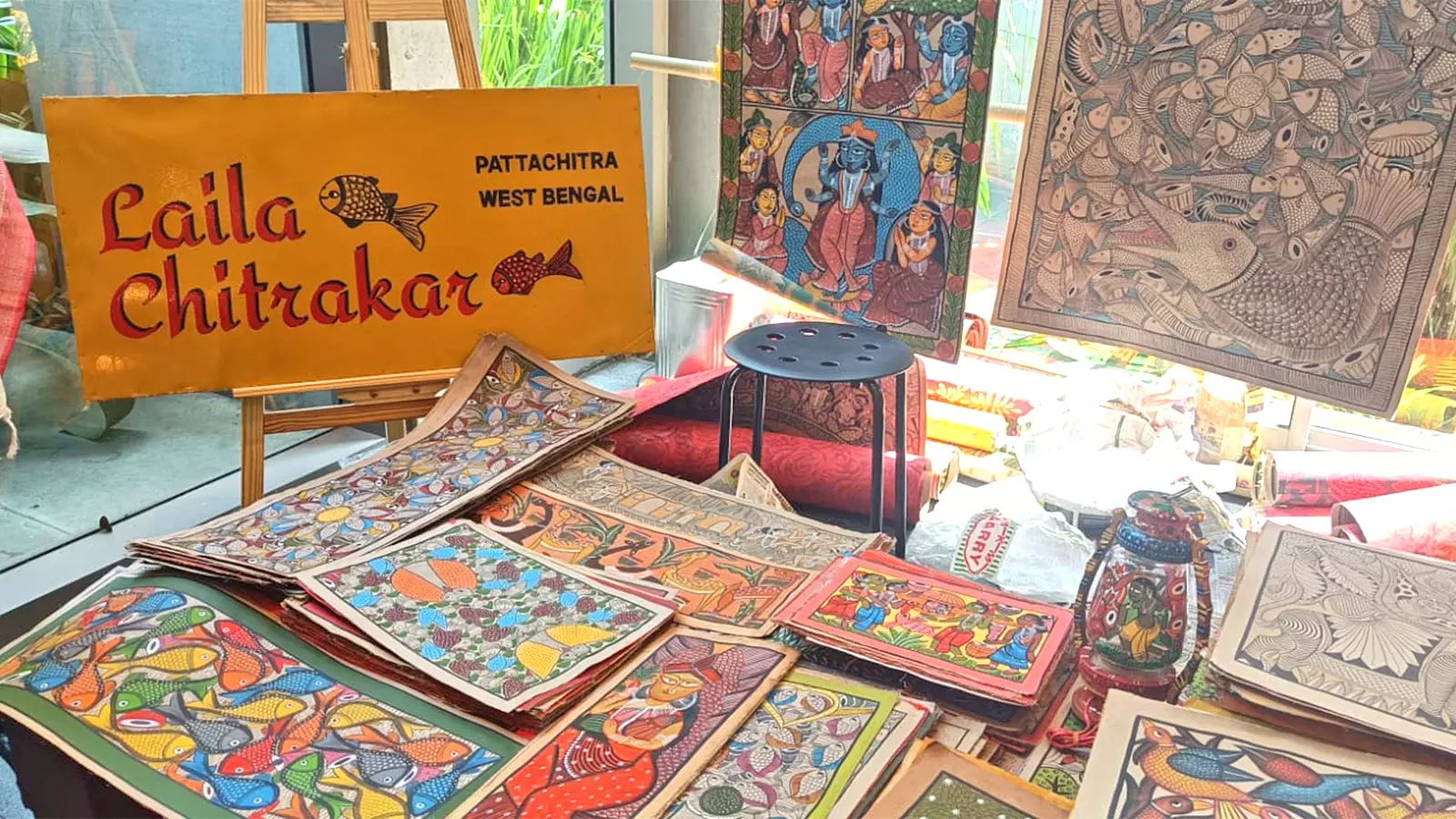
Laila Chitrakars Patachitra paintings are art lovers delight. Photos: Maitreyee Boruah
He is from Bhusanda village, which is located close to Patangarh. He proudly says he has learned to paint from his wife Mantibai. His wife is from Patangarh. Maravi, trained to be a nurse, decided to become an artist instead. Today, he earns his livelihood by making beautiful Gond paintings seeped in motifs and designs inspired by wildlife, flora and fauna around him.
Travelling for traditional art
Both Chitrakar and Maravi travel three to four times a year to different parts of the country, mostly to cities like Delhi, Mumbai and Bengaluru to sell their artworks.
“Our market is mostly in urban centres. People in my village don’t buy paintings. They appreciate my art, but they can’t afford to buy them,” said Maravi, whose parents are farmers.
Chitrakar sells her work in Kolkata but the income is not enough for her family. So she travels. She stays with her family in the famous Kalighat — the revered Hindu temple complex in the City of Joy.
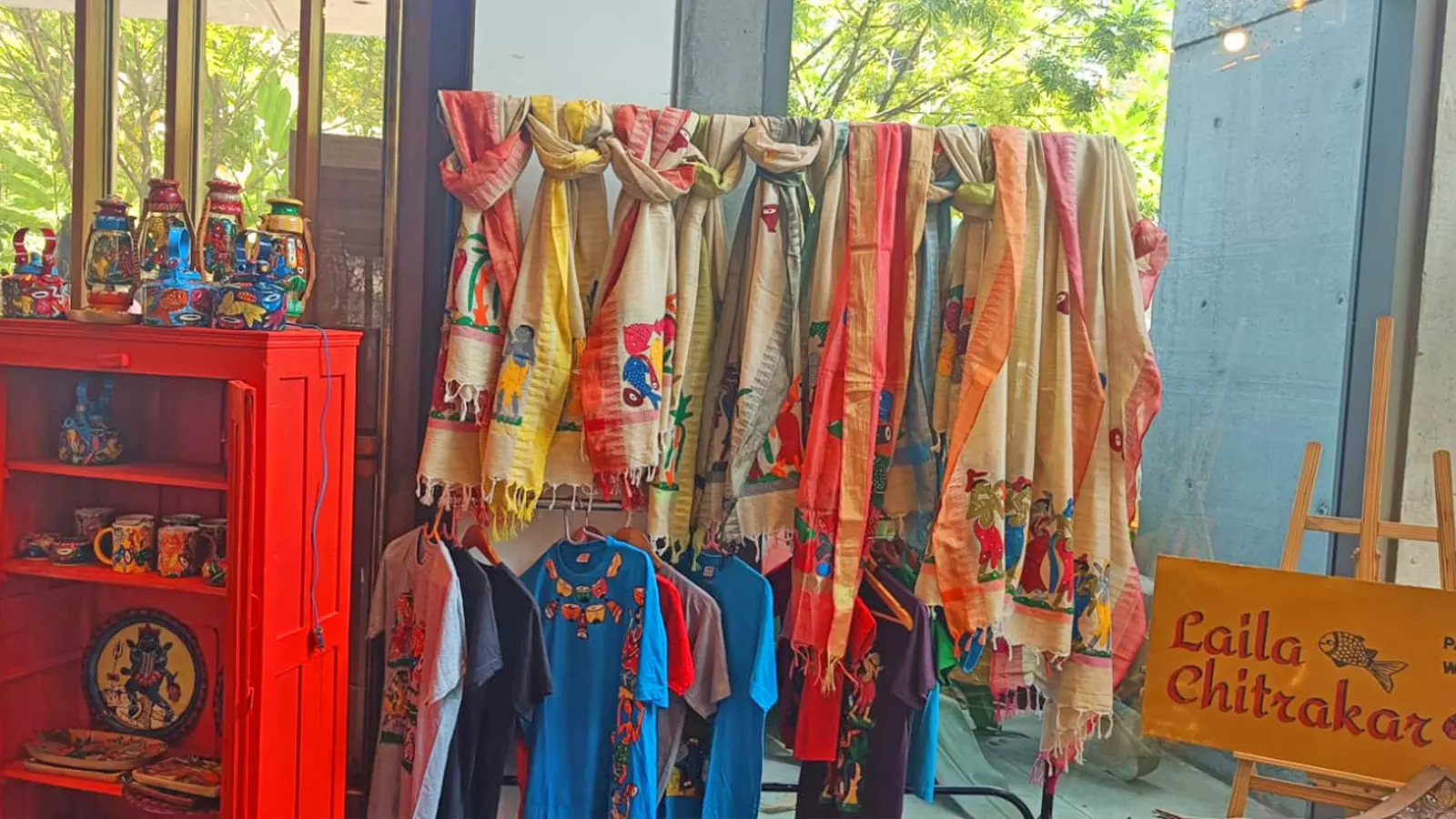
Scarves, tee-shirts and decorative items designed in motifs of Patachitra paintings.
“It is always nice to travel to different parts of the country. I meet different people during my visits. Some buy my paintings, others appreciate them. This way I am also preserving and promoting the fading art form which is practised by a small group of artists in West Bengal,” she added.
The paintings of both artists start from Rs 500 and can go up to Rs 45,000. “Along with artistry, each painting demands a lot of hard work and patience. My eyesight is already fading as the designs are very intricate and it takes a long time to paint,” said Chitrakar, which translates to painter.
Earth, nature, gods and mythology
In her colourful paintings, Chitrakar always depicts Hindu gods and mythological characters or incidents and themes and characters from everyday life. “Earlier, when there was no television, cinema halls and social media, my ancestors sang songs explaining the stories behind the paintings. It was a form of entertainment for the people,” informed the Patachitra painter.
Last year, the much-acclaimed Gond painting of Madhya Pradesh received the prestigious Geographical Indication or GI tag.
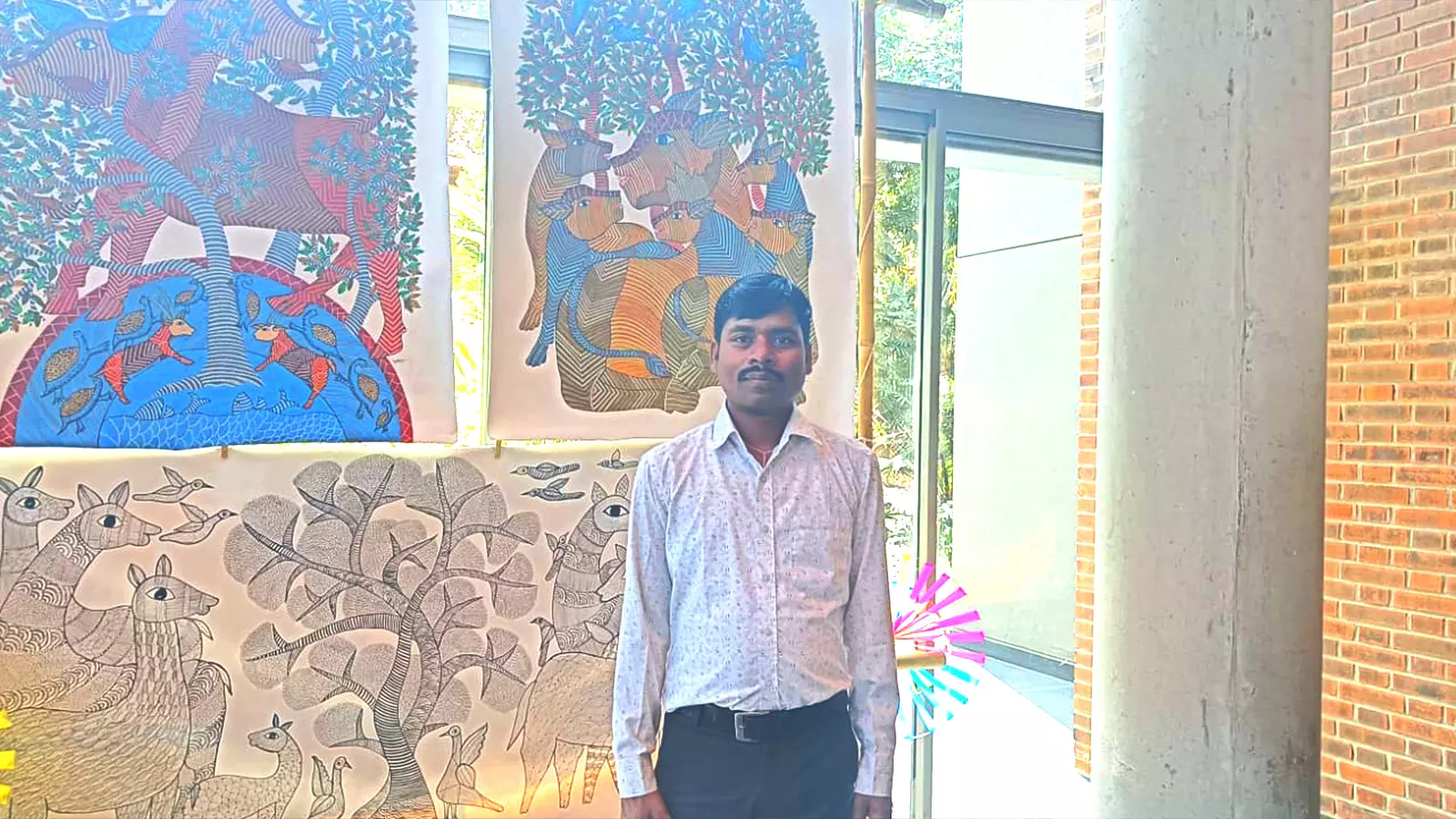
Sukhiram Maravi is a tribal Gond painter from Madhya Pradesh.
“Getting the GI tag is a matter of pride for us. It affirms the superior and artistic nature of Gond painting. These paintings are rooted in the traditions of our tribal community,” said Maravi.
Explaining Gond painting, he added, “Our art is about nature, trees, plants, animals, moon, sun, river, drains, god and goddesses. Through our paintings, we also describe our food habits, farming traditions, the valour of our kings and powers of tantra mantra (black magic), to name a few.”
For Chitrakar and Maravi, their artworks are not just a medium of employment for them. “It is our identity, our respect and our symbol,” said Chitrakar. “In Gond paintings, the whole human life and its journey are depicted. Each painting is a story in itself,” added Maravi.
Appreciation of rural art in the urban milieu
Kapila Sharma is a regular visitor to art and crafts fairs in the city. Sharma who bought a painting and scarf from Chitrakar said, “I am not an art expert. Neither, I am an art collector as I am not rich enough. But I am a connoisseur. Sometimes, I do buy paintings and handicrafts and handloom items during my visits to such expos.”
The 45-year-old homemaker added that India has a rich treasure trove of traditional arts and crafts. “We need to preserve and promote them before they go extinct.”
Like Sharma, Malathi Suresh, a graphic designer, said she loves to visit fairs where rural art is showcased. “It is a learning experience for me. I take inspiration from our rural artisans,” she added, pointing towards a huge animal painting done by Maravi.
Band of talented rural craftsmen and artisans
Chitrakar and Maravi were part of at least 15 rural craftsmen and artisans from across the country who displayed their work in India's IT hub. The artisans and craftsmen came from Rajasthan, Uttar Pradesh, Kashmir, Nagaland, West Bengal, Andhra Pradesh, Karnataka and Madhya Pradesh under the banner of Project Tarasha and Creative Dignity.
Project Tarasha is a social initiative started by Titan Company Limited during the coronavirus pandemic when artisans were struggling hard to save their artworks and livelihood. As a part of its work, it facilitates craft entrepreneurs and groups to create their digital presence and reach customers directly.
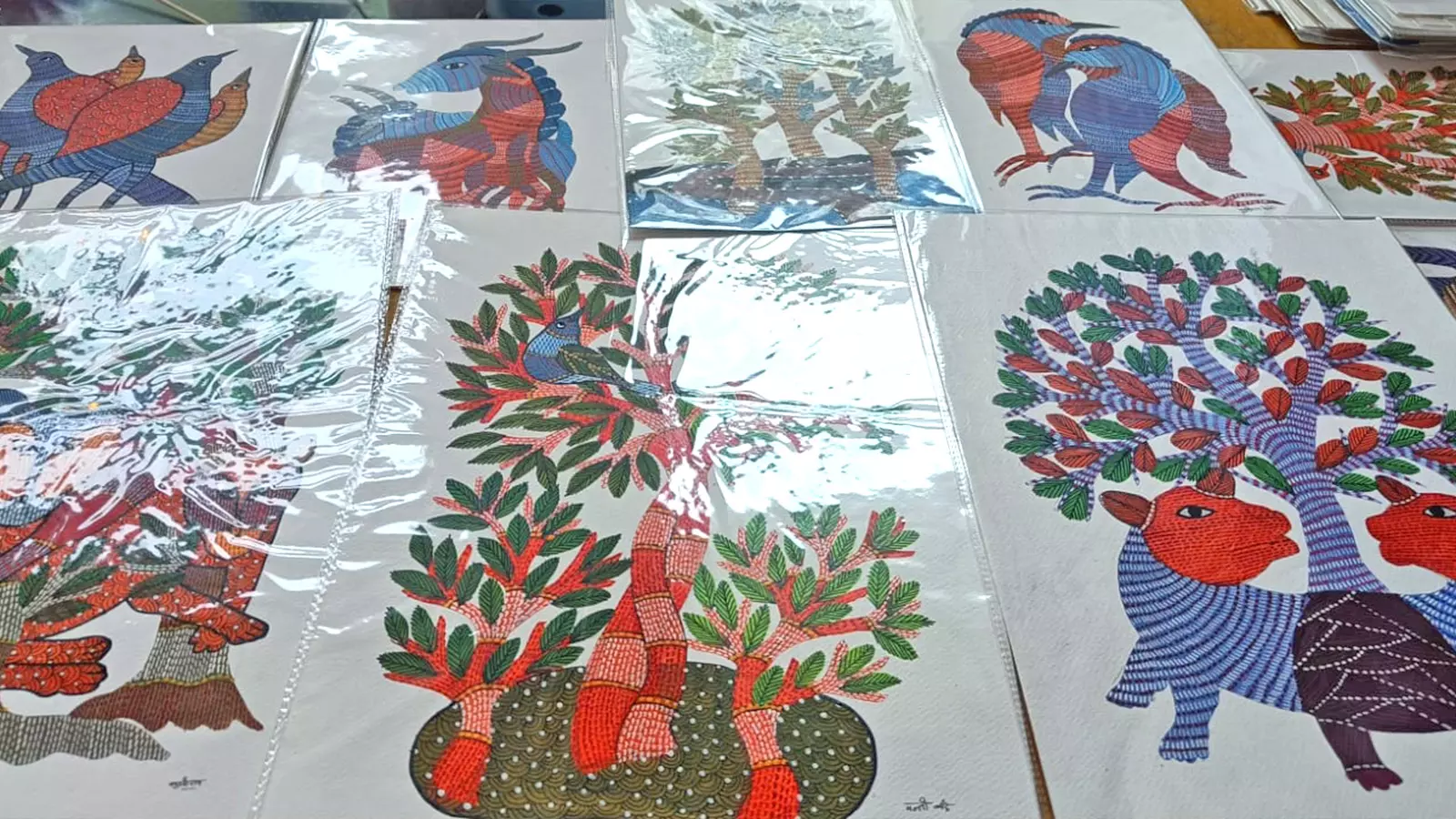
Last year, the much-acclaimed Gond painting of Madhya Pradesh received the prestigious Geographical Indication.
Similarly, Creative Dignity is a collaborative network of various stakeholders within the Indian handmade sector which came together during the pandemic. Today, it works with artisans in 26 states of the country. The organisation works in capacity building, innovation and digital access for craftsmen to promote their works across the globe.
Going digital
Often for rural artisans and craftsmen, earning a livelihood also means interacting with buyers — who are also admirers of their works — and commuting from one place to another to sell their products.
In today’s digital age, a painter like Maravi is taking "baby steps" to explore the online world to promote his work. In the process, he hopes to have "enough followers" who buy his works at the click of a button. The 34-year-old has his own Instagram account, sukhiram_maravi89. “I am new on social media. I need to be more active to have a sizeable number of followers on social media. I am hopeful of garnerning some attention to my work by posting them online,” he said.
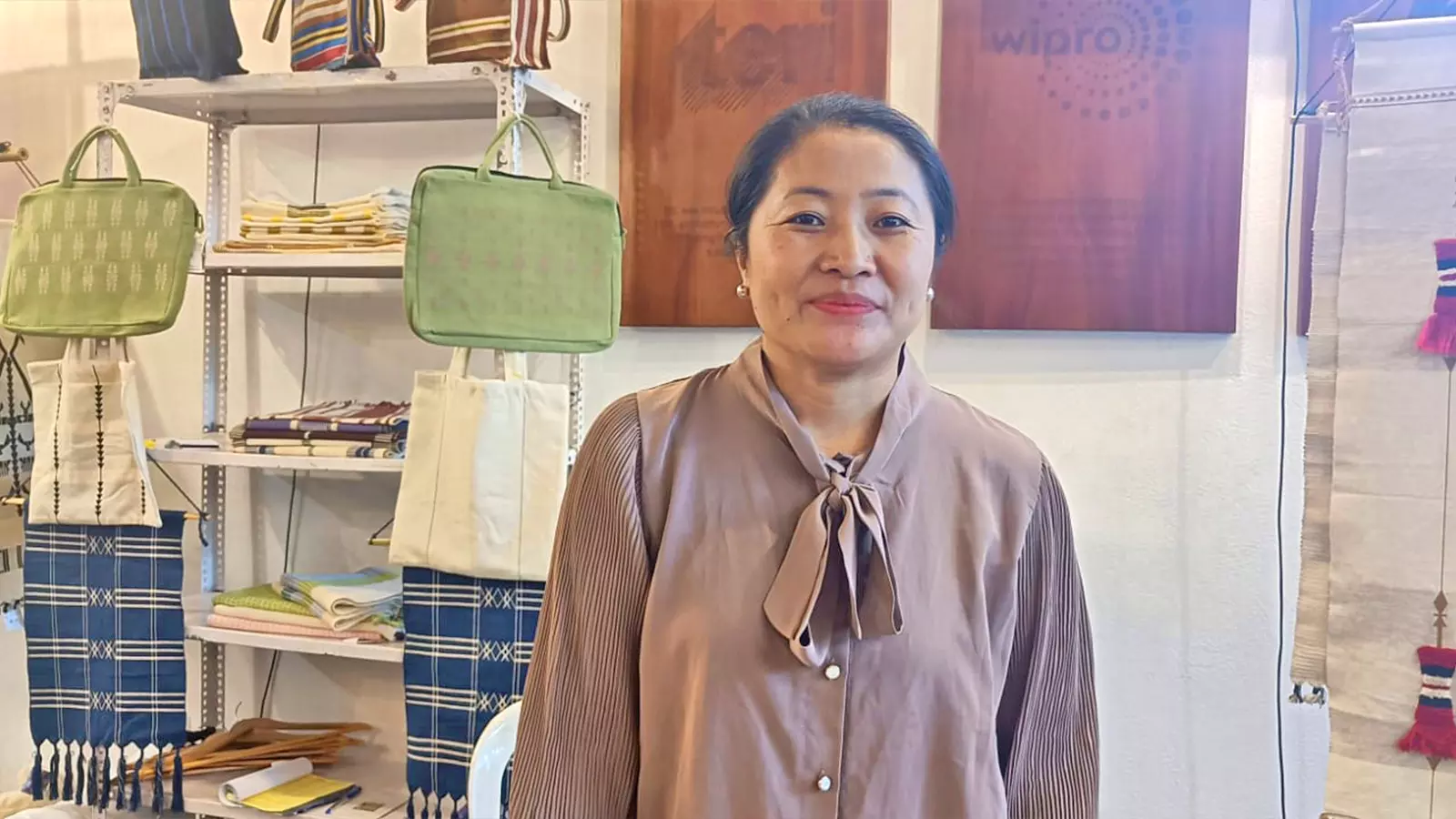
Vekuvolu Dozo, a weaver from Nagaland, took part in the exhibition in Bengaluru.
Vekuvolu Dozo, a loin loom weaver from Nagaland, who was also a part of the exhibition in Bengaluru, said that it was important to have a social media presence in today's time. “Especially for local artisans and craftsmen like us who come from the hinterlands. I specialise in weaving home furnishings in cotton in both traditional colours and motifs. I also do contemporary designs in Naga fabrics. I need to tell people what I do. And social media gives me that opportunity easily,” added Dozo, whose Instagram account is vekuvoludozo.
